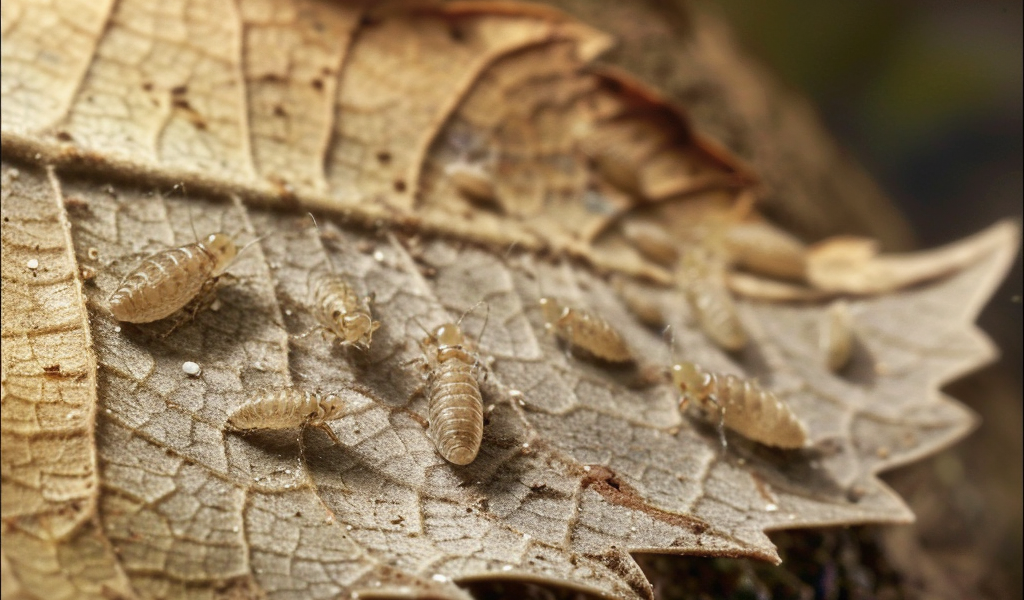Rare Whitefly Fossils Unearthed in New Zealand: Insights into Ancient Forest Ecosystems
Newly discovered fossils of whitefly insects have provided a fascinating glimpse into the ecological dynamics of ancient forests in New Zealand. These minuscule fossils, measuring only about 1.5mm by 1.25mm, were found preserved in Miocene-age crater lake sediments at Hindon Maar, located near Dunedin. The findings were recently published in the journal Palaeobiodiversity and Palaeoenvironments.
Whiteflies, which are typically around 3mm in size as adults, are tiny insects that are often overlooked due to their diminutive stature. The fossils discovered at Hindon Maar are remarkable not only for their size but also for their exceptional preservation. They were found attached to the undersides of fossilized leaves, in the very position where they lived and died.
Dr. Uwe Kaulfuss, a co-author of the study and a researcher at the University of Göttingen in Germany, explained the significance of this discovery. “Fossils of adult whitefly insects are not uncommon, but it takes extraordinary circumstances for the puparia—the protective shell from which the insect emerges—to become fossilized,” he stated. The process that led to the fossilization of these tiny insects was likely quite rapid. Approximately 15 million years ago, a leaf bearing the puparia must have detached from its host tree, subsequently sinking to the lake’s bottom where it became covered by sediment, facilitating its preservation.
The study introduces a new genus and species of whitefly, marking a significant contribution to our understanding of the ecological landscape of ancient forests on New Zealand’s South Island. Emeritus Professor Daphne Lee, another co-author of the study from Otago’s Department of Geology, emphasized the importance of these findings in expanding the knowledge of insect fauna in the region. “It was difficult to see much with the naked eye, but once the fossils were under a microscope, we could see the amazing detail,” she noted. The preservation of these fossils in life position on the leaf is both incredible and extremely rare, making this discovery particularly noteworthy.
These whitefly fossils represent the first of their kind to be identified in New Zealand and only the third instance of such fossil puparia recognized globally. This discovery is part of a broader trend in paleontology; until about two decades ago, the total number of insect species in New Zealand older than the Ice Ages was a mere seven. Today, that number has skyrocketed to around 750, with the majority of these specimens housed in the Otago Geology Department collections.
The implications of this discovery extend beyond the realm of entomology. The presence of these ancient whiteflies suggests a more complex and diverse ecosystem in New Zealand’s prehistoric forests than previously understood. The fossilized remains provide critical evidence of the interactions between various species and their environments during the Miocene epoch.
As researchers continue to explore the fossil record, they anticipate uncovering additional insights into the biodiversity and ecological relationships that existed in ancient ecosystems. Each new discovery not only enhances our understanding of the past but also informs current conservation efforts by illustrating the long-term impacts of environmental changes on species survival.
The study of these rare whitefly fossils underscores the importance of paleontological research in piecing together the history of life on Earth. As scientists delve deeper into the fossil record, they continue to unveil the intricate tapestry of life that has existed long before humans walked the planet, enriching our knowledge of biological diversity and evolution.
In summary, the discovery of these rare whitefly fossils in New Zealand not only highlights the significance of the region’s paleontological heritage but also emphasizes the need for continued research in understanding the complexities of ancient ecosystems. As more fossils are unearthed, they will undoubtedly contribute to an ever-evolving narrative of life on Earth.





